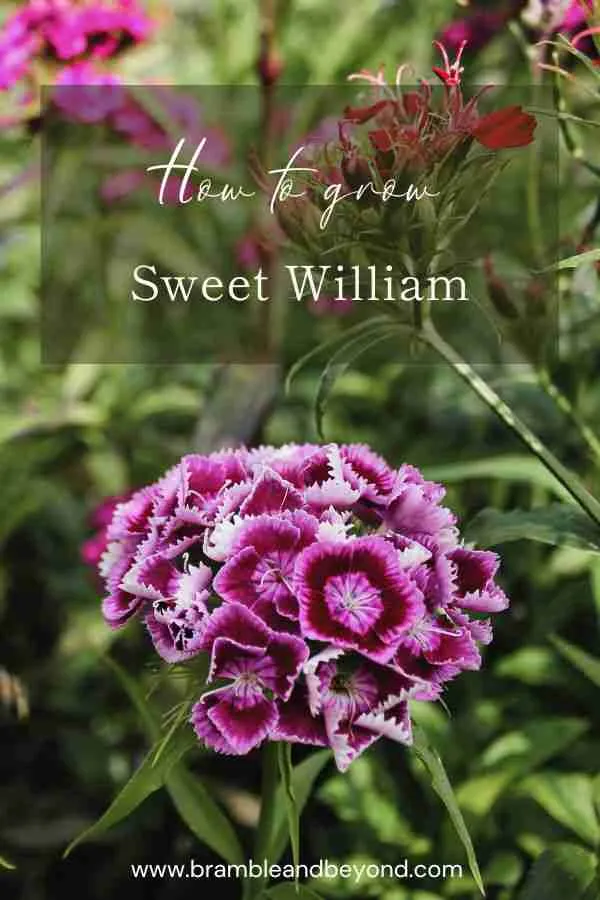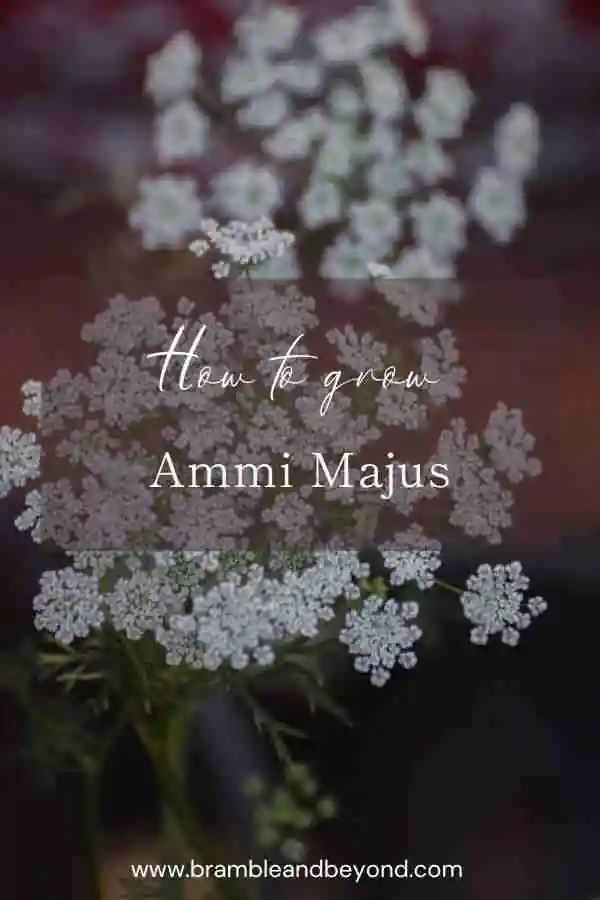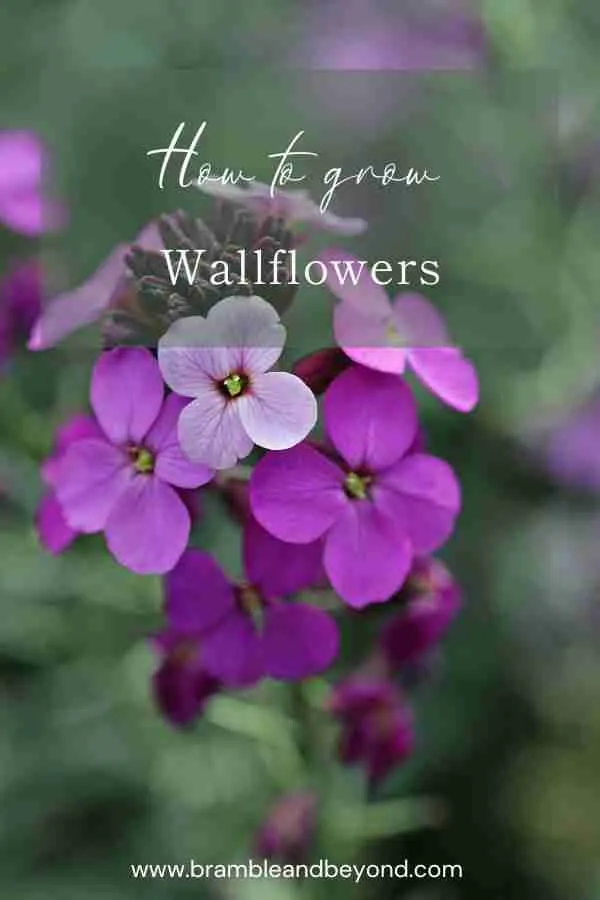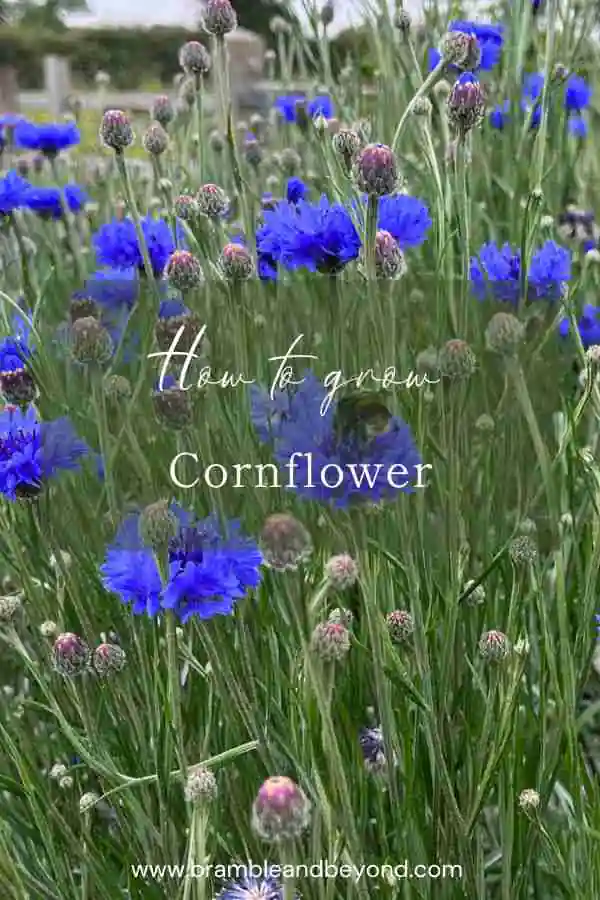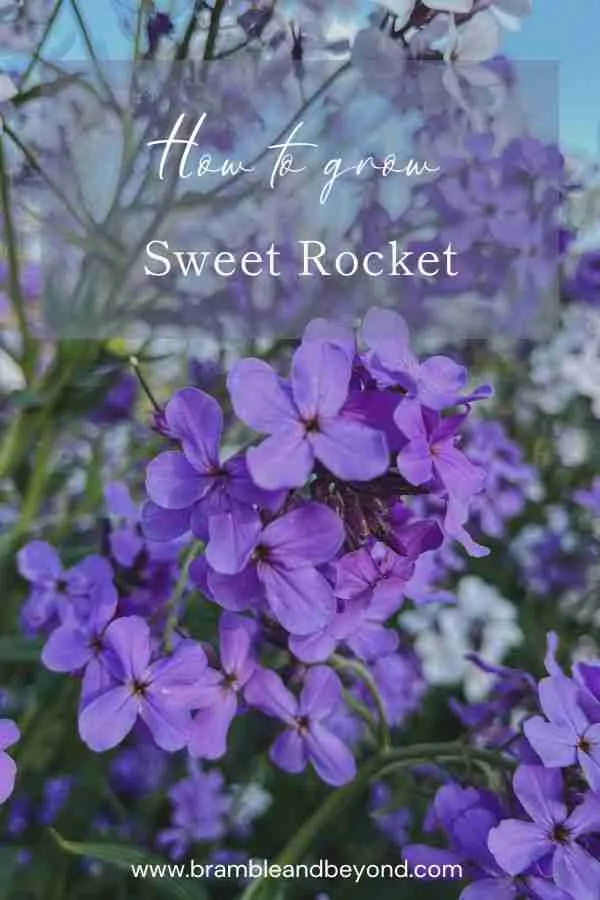Disclosure: This post may contain affiliate links, meaning I get commission if you decide to make a purchase through my links, at no cost to you. Please read my Affiliate Disclosure for more information.
Welcome to our guide on how to grow Sweet William (Dianthus barbatus), a beautiful flowering plant that will bring a burst of colour to your garden early in the season. Sweet William is known for its sweet scent and makes a fantastic cut flower and also a great bedding plant to have in your garden if you want colour in early summer.
I had the pleasure of growing these for the first time last year and I was truly amazed by how long they kept blooming in such a beautiful array of colours. Maybe they would appear a bit more subtle and elegant if I narrowed down the colour selection instead of using a mix, but they are definitely on my shopping list for this year.
What is Sweet William
Sweet William, scientifically known as Dianthus barbatus, belongs to the Dianthus genus, which includes a diverse group of flowering plants. It is a member of the Caryophyllaceae family and is often referred to as “barbatus” due to its characteristic beard-like petals.
Sweet William plants typically reach a height of about 30 to 60 cm and have a bushy growth habit. The plant features lance-shaped leaves that are usually green or bluish-green in colour on stiff stems, that are easy to snap. When in bloom, Sweet William produces clusters of fragrant flowers in a wide range of mixed colours. These colours include white, scarlet, pink, magenta, and auricula-eyed varieties, creating a vibrant and eye-catching display in your garden.
Sweet William is a versatile plant that can be grown as a short-lived perennial, annual, or biennial, depending on your preference. It thrives in cool to temperate climates and prefers full sun or partial shade. When choosing a location for planting, ensure the soil is well-draining and rich in organic matter. Sweet William can tolerate a range of soil types but prefers a slightly alkaline soil pH.
With its stunning colours, sweet fragrance, and ease of cultivation, Sweet William is a delightful addition to any garden. By following the tips and guidelines in this guide, you’ll be on your way to growing thriving and beautiful Sweet William plants in no time.
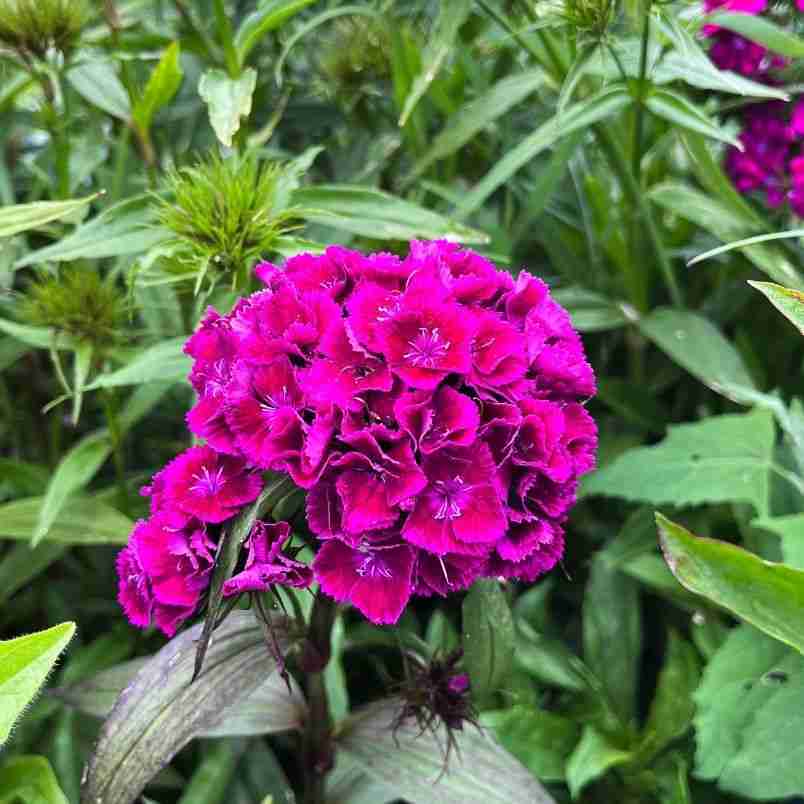
How to grow Sweet William:
- Sow seeds from late spring to early summer and plant seedlings in the garden at least 6 weeks before your first autumn frost.
- Plants will winter over in the garden and bloom the following spring.
- Can be sown direct.
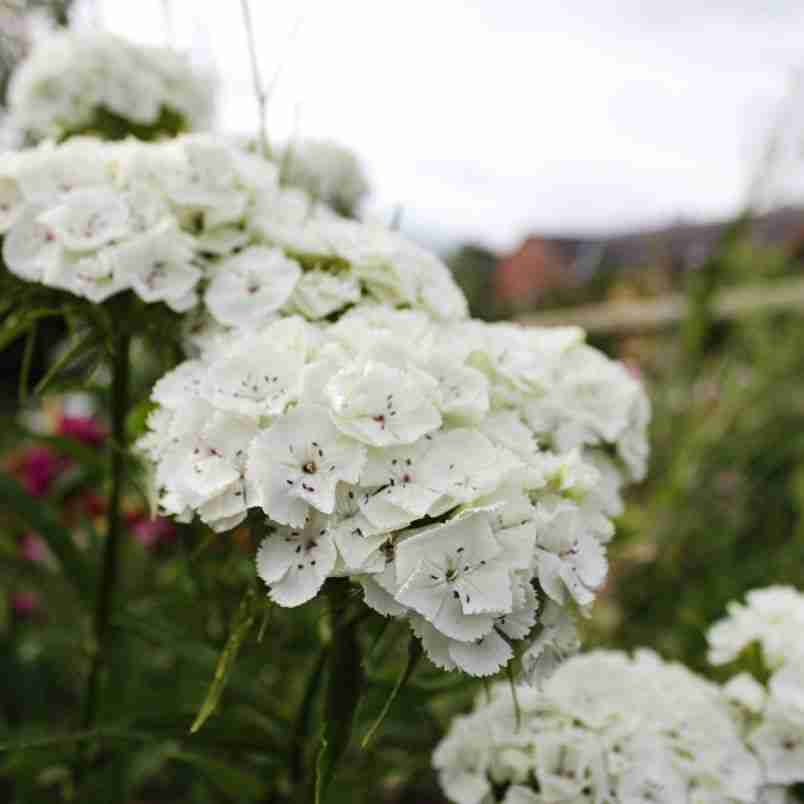
Plant details:
- Plant type: hardy perennial/biennial
- Height: 60cm
- Site: full sun
- Sowing Depth: 6mm
- Germination: 14-21 days
- Temperature: 12-15°C
- Days to maturity: 330-360 days
- Plant spacing: 15cm
- Pinch: not necessary
- Staking: not required
- Drying: no
- Approx seeds per packet: 200
Please note we pack the majority of our seeds by weight so the number of seeds indicated is only an approximation.
Currently, I sell our seeds, and other bits and bobs, through Etsy, so the link below will direct you there.
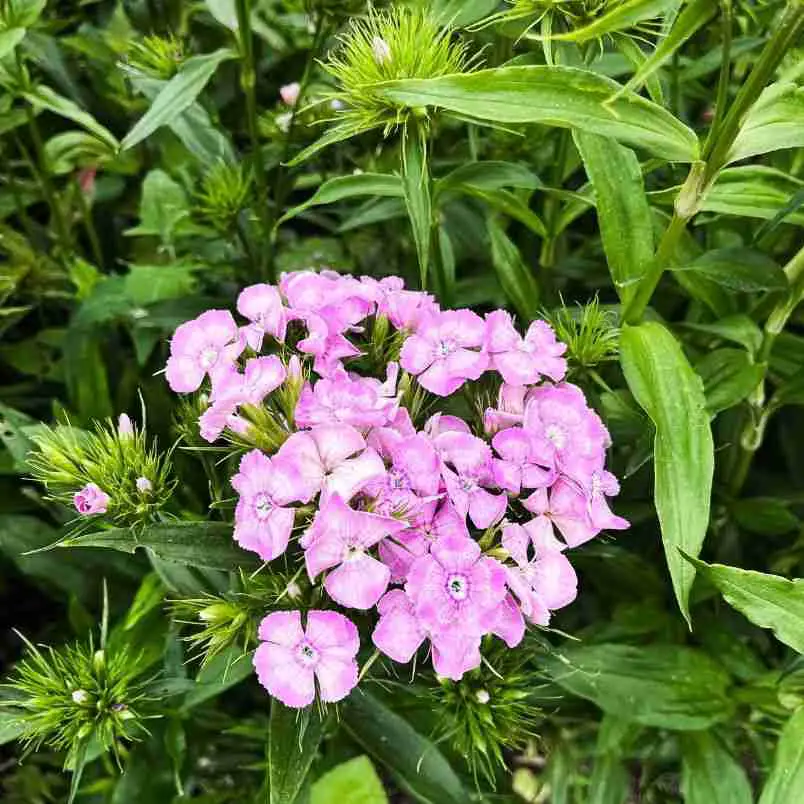
Harvesting and vase life:
- Harvest when first flowers on a stem are open and place straight into water.
- Their stiff stems can be inflexible for arranging and snap easily so be gentle with them.
- Expect a vase life of 10 to 14 days.
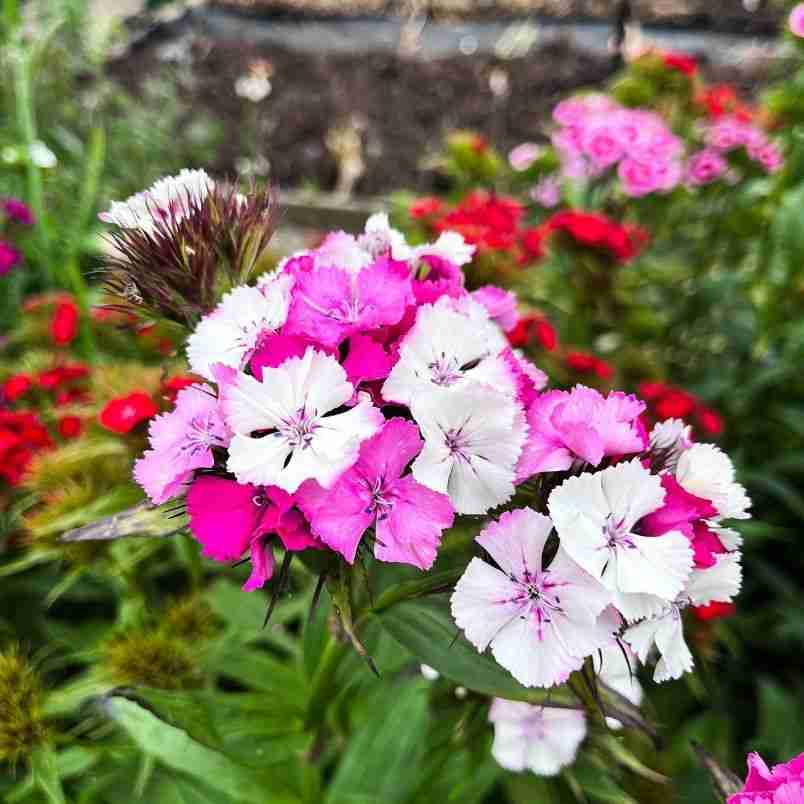
Here are my top tips for growing Sweet William:
- Sweet William is a biennial, which means they flower in the second year of growing. What this means in my experience is that you get flowers in that awkward gap in late May- early June, when nothing else seems to be in flowers, so they are extremely useful.
- You can sow your Sweet William seeds mid June for flowers the following June. If you want an easy date to remember, plan to sow them on the summer solstice (usually 21st June).
- Sow your seeds about 6mm(ish) deep in good quality seed compost. I sow them in module pots in June and then plant them in their final position in early Autumn.
- Sweet William are not a large plant, although they can spread a bit so give them a bit of room, at least 20cm apart.
- These plants are happiest in full sun, so you have flexibility in choosing the perfect spot for them in your garden.
Remember, gardening is not just a hobby, it’s a way to relax, express your creativity, and connect with nature. Happy gardening!

